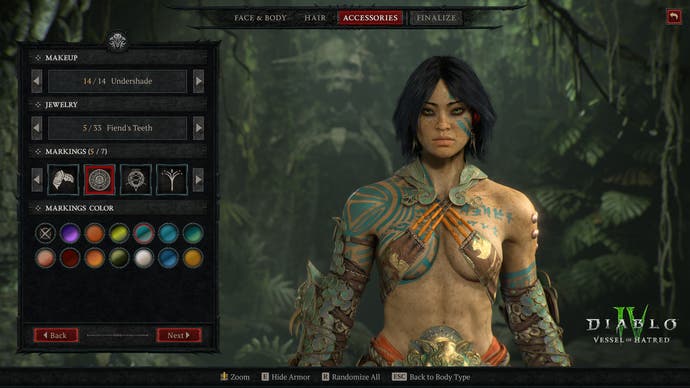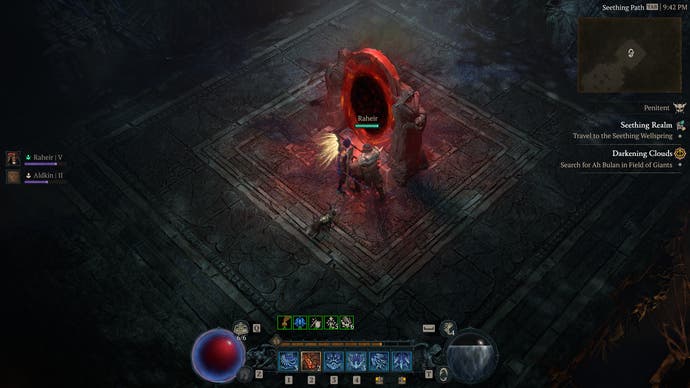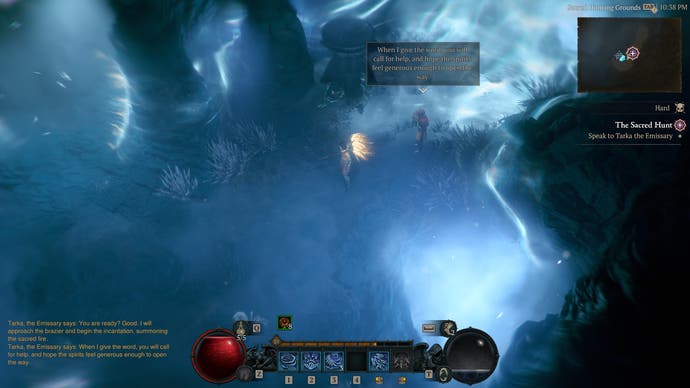Diablo 4: Vessel of Hatred review - a spirited expansion pack in the classic Blizzard style
Earning an honest Kurast.
I miss expansion packs. Blizzard in particular was famous for what we'd now call "post-launch DLC", updating the likes of StarCraft, Warcraft and Diablo with incredible upgrades that extended beloved storylines while adding on much-needed polish and complexity for players in love with their games. To my intense joy, Vessel of Hatred is very much a Blizzard expansion pack in that classic mould, continuing the cliff-hanger ending of Diablo 4, adding on a wickedly fun new character class and cleaning up some of the cruft that had accumulated over five seasons of play.
Before I get into the brilliance of Vessel of Hatred, a confession. After wrapping up Diablo 4's storyline soon after launch and one or two abortive attempts to get friends interested in co-op sessions, I hung up my adventuring gloves and moved over to other titles before the game's second season. I heard good things - Season 4's "Loot Reborn" update in May seemed particularly popular amongst friends still playing the game - but with a surfeit of other distractions, I had no great ambition to return to the world of Sanctuary before its first proper update.
That made me a little apprehensive about getting up to speed with the game after almost a year-and-a-half away. I shouldn't have worried though - for whatever Blizzard has lost over the years, as veteran designers have moved on, it still is absolutely excellent at making its games easy to grasp and fun from the off. While a lot of new content and systems have been added on, a lot of the dead weight has been sloughed off too. You're free to start a new character with the original campaign completed, if you already played it back in the day, or even with the whole campaign completed if you want to get to the "end-game" content right away.
The new campaign is certainly worth playing through at least once, though it feels perhaps a little shorter and less conclusive than those added in Diablo 2's Lord of Destruction and Diablo 3's Reaper of Souls. It picks off with your character on the trail of your erstwhile companion Neyrelle, who absconded with Mephisto's soulstone at the climax of the last game at great personal risk to herself. She's fled to a new area, the lush jungle of Nahantu, which has been grafted onto the bottom of the already sprawling map of Sanctuary. I really enjoyed exploring this new biome, and especially being reintroduced to some classic motifs and characters from Diablo 2 ("You speak now to Ormus.")
I won't go into the specifics of how the storyline unfolds, but it does advance the plot in a meaningful way and feature interesting, well-written characters and genuine stakes. Neyrelle and new companion Eru make reasonable but difficult choices based on the options available to them over the course of their journeys, and feel more well-rounded than other characters - like one-dimensional Urivar, who has seemingly parachuted in just to make your life difficult and increase the variety of enemy troops.
The locations are perhaps the overall highlight here, with Blizzard's environmental artists crafting some suitably mesmeric interpretations of the spirit realm and lost temples amongst the usual hellish corruption. A triumphant setpiece towards the end of the game, as enemies spring out from the walls of a hidden path as you race towards your goal, is particularly beautiful. While Vessel of Hatred's story does come to a satisfying climax, the greater conflict very much remains unfinished. (Vessel of Hatred is described by Blizzard as "the first Diablo 4 expansion" and at least one more is planned.)
New character classes are always exciting in a Diablo game, and the new spiritborn is perhaps the best expansion additions ever. It combines a focus on long melee weaponry (glaives, quarterstaffs and polearms) with thematic magic based around four jungle animals: the jaguar, gorilla, centipede and eagle. You're free to choose between any or all of the above, with both specialisation and synergy reaping rewards.



I opted to dump most of my skill points into eagle abilities and an eagle spirit guardian, letting me roll around the map or drop from the sky while shooting out lightning and calling on my namesake beast. The degree of mobility here is extreme, even beating out the nimble rogue, and from what I've seen from other spiritborn in the field, the other animal features are equally amusing to deploy. There's plenty of potential for progression too, with the level cap now at 60 and 300 Paragon levels (now shared across characters) beyond that.
Your build is also affected by your choice of mercenaries, another new system added by Vessel of Hatred. You're introduced to the first of your four options through the story, with the three others available as quests out on the map, and each can level up over time to unlock new selectable abilities or grant you loot.
You actually have two mercenary slots, with one "permanent" position following you around the field of battle (like with hirelings in Diablo 2 and followers in Diablo 3) and one "call-in" position. The latter can be set to appear as often as possible, as it operates on a cooldown, or when a specific ability is triggered. For example, I had a charming demonic child appear and deliver a gout of flame whenever I shot my lightning spell, ensuring I didn't waste his call-in when I was just attacking a single weak enemy.


Just playing through the campaign gives you plenty of opportunities to test out new abilities, mercenaries and items, and the epilogue quest Deeds of a Champion rather naturally rolls you into the proper end-game content. Here, a story character introduces each of the various dungeons as ways to protect the city and beat back the forces of evil. There's a truly dizzying array of options here, each with their own currency and/or progression system, and that's on top of the usual side quests, cellars and ability dungeons that you'll find while roaming across the map.
I enjoyed trying each of these, especially the Kurast Undercity dungeons that push you to try to complete them while on a strict time limit. There's even a new co-op Dark Citadel mode, which reminds me of a MMO-style raid, for two to four players. Thankfully, there's a new party finder feature that makes it relatively straightforward to explore the dungeon's three wings even if you don't have a willing friend online at the time. The gameplay here includes more puzzles than your typical dungeon, and is one of the better ways to get good loot - though it requires you reach the torment difficulty levels.
In general, I found that it's worth pushing up your difficulty aggressively, as you find better loot and earn more XP and gold once you go beyond normal to hard (the highest difficulty you can start with), expert (accessible after finishing the campaign's prologue) and penitent (accessible after finishing the original campaign). The game is also just more fun - at least for me - with the genuine fear that I might die if I encounter a particularly tough enemy or get lazy when slinging my spells.



Unlike the original game, I never found myself dying in what I perceived to be an "unfair" way - there are still matyrdom-from-Call-of-Duty-style explosions, blobs of fire or poision that can wipe out your health in an instant, but they're well telegraphed and are only a real issue in extremely confined spaces. I did find some small bugs here and there - a few elite enemies with the name "!! MISSING RARE NAME" and a few side quests that couldn't be completed because the relevant NPCs didn't turn up - but this is still the most polished that Diablo 4 has feeled since I started playing.
That extends to the graphics too, which are still stunning in 2024. This is a game that really benefits from playing on a great monitor or TV - ideally an OLED for its contrast and HDR presentation - but it scales well too, with the game still running fine on a PC handheld or an older laptop.
With so many options to explore and the promise of ever more powerful and unique gear to discover, it's hard for me to imagine that I'll be bored of Vessel of Hatred's post-game any time soon. Of course, there's always the option to totally respec your character or begin a new one of a different class if you want to really change up how the game plays.
For me, I'll be quite happy with my lightning-powered cartwheeling spiritborn adventurer for the foreseeable future. I don't know if there's enough here to keep me fully engaged until the next expansion rolls around in a year or two, but Vessel of Hatred has sunk its claws into me in a way that the base game never did.
A copy of Diablo 4: Vessel of Hatred Ultimate Edition was provided for review by Activision Blizzard.


